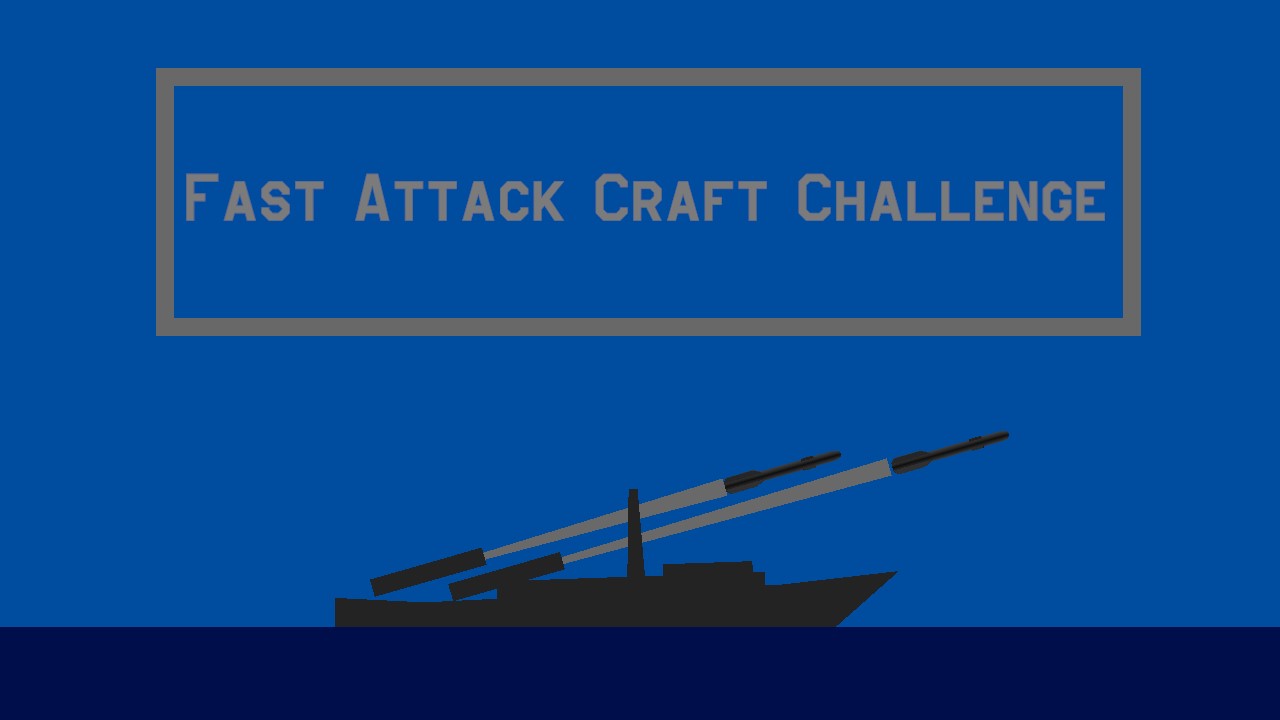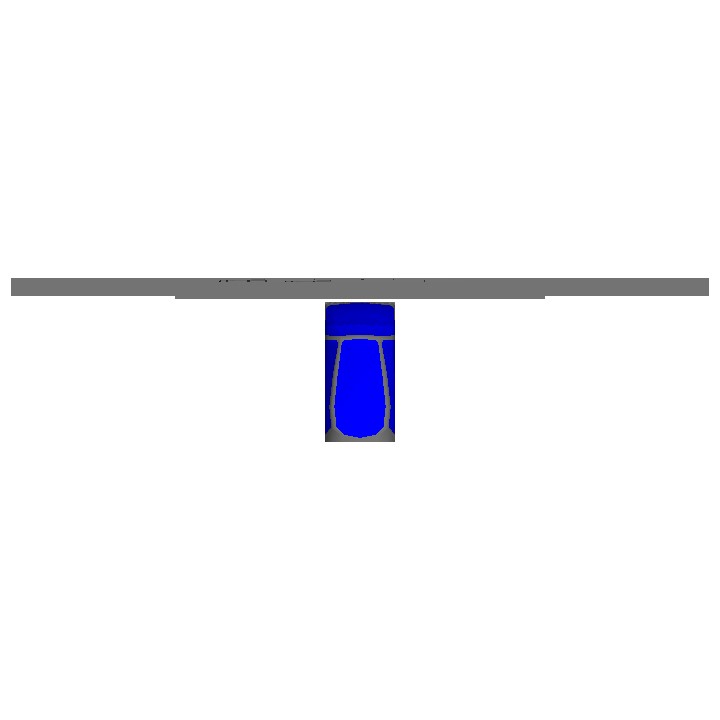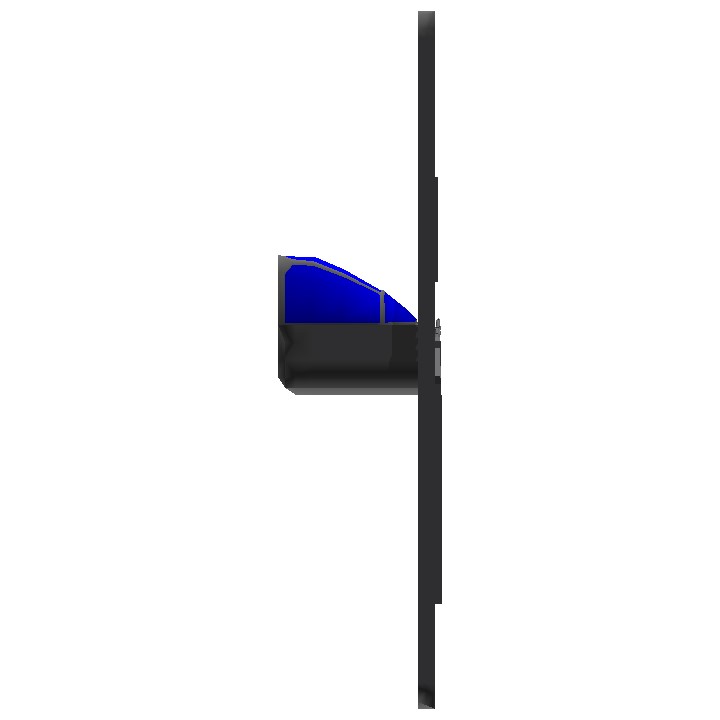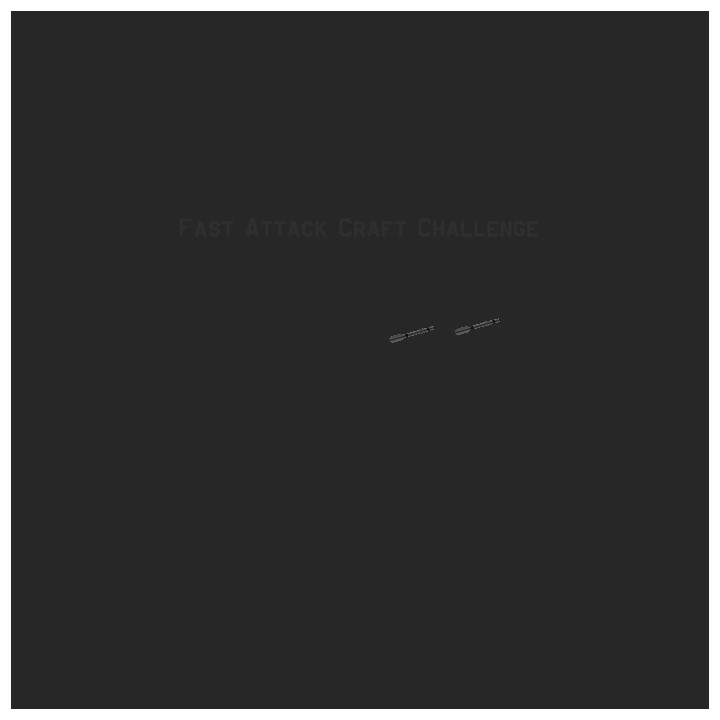About the Challenge
Your goal here is to create a fast attack craft, it can be a replica or fictional as long as it fits the criteria.
But first.
What is a Fast Attack Craft?
A fast attack craft (FAC) is a small, fast, agile, offensive, often affordable warship armed with anti-ship missiles, gun or torpedoes. FACs are usually operated in close proximity to land as they lack both the seakeeping and all-round defensive capabilities to survive in blue water. The size of the vessel also limits the fuel, stores and water supplies. In size they are usually between 50–800 tonnes and can reach speeds of 25–50 knots (46–93 km/h).
A fast attack craft's main advantage over other warship types is its affordability. Many FACs can be deployed at a relatively low cost, allowing a navy which is at a disadvantage to effectively defend itself against a larger adversary. A small boat, when equipped with the same weapons as its larger counterpart, can pose a serious threat to even the largest of capital ships. Their major disadvantages are poor seagoing qualities, cramped quarters and poor defence against aerial threats.
As early as the mid-19th century, the Jeune École's poussiere navale theory called for a great number of small, agile vessels to break up invading fleets of larger vessels. The idea was first put into action in the 1870s with the steam-powered torpedo boats, which were produced in large numbers by both the Royal Navy and the French Navy. These new vessels proved especially susceptible to rough seas and to have limited utility in scouting due to their short endurance and low bridges. The potential threat was entirely extinguished with the introduction of the torpedo boat destroyer (TBD) in 1893, a larger vessel which evolved into the modern destroyer. It could mount guns capable of destroying the torpedo boat before it was within range to use its own weapons.
The idea was revived shortly before World War I with the craft using new gasoline engines. Italy and Great Britain were at the forefront of this design, with the coastal motor boat (CMB) and the motobarca armata silurante (MAS) (Italian: "torpedo armed motorboat"). The outstanding achievement of the class was the sinking of the Austro-Hungarian battleship SMS Szent István by MAS. 15 on 10 June 1918. The equivalent achievement for the CMBs was a lesser success; during the Russian Civil War CMBs attacked the Red Fleet at anchor at Kronstadt on 18 June 1919, sinking the cruiser Pamiat Azova for the loss of four craft.
The design matured in the mid-1930s as the motor torpedo boats (MTBs) and motor gunboats (MGBs) of the Royal Navy, the PT boats of the US Navy, and the E-boats (Schnellboote) of the Kriegsmarine. All types saw extensive use during World War II but were limited in effectiveness due to the increasing threat of aircraft; however, some successes were achieved in favourable conditions, as showcased by the crippling of the cruiser HMS Manchester (later scuttled), in the night of 13 August 1942, by Italian MS boats.
After World War II, the use of this kind of craft steadily declined in the United States and Britain, despite the introduction of safer diesel engines to replace the highly flammable gasoline ones, although the Soviet Union still had large numbers of MGBs and MTBs in service.
With the development of the anti-ship missile, FACs were reborn in the Soviet Union as "missile boats" or "missile cutters". The first few missile boats were originally torpedo boats, with the torpedo tubes replaced by missile launchers.
The idea was first tested by the Soviet Union which, in August 1957, produced the Komar class which mounted two P-15 Termit missiles on a 25-metre (82 ft) hull with a top speed of around 40 knots (74 km/h; 46 mph). Endurance was limited to 1,000 nautical miles (1,900 km; 1,200 mi) at 12 knots (22 km/h; 14 mph) and the vessels had supplies for only five days at sea.
Build Criteria
• The build must be a successor to this post
• Maximum part count is 1,500 parts (please disable drag on most parts to reduce lag)
• No modded parts(I will allow XML modded parts but not the ones that require a separate mod)
• If fictional, the build must be time appropriate between 1930 to the present day
• Give a description to your post
• Works well on the Ocean Mod(Optional)
• Size must be between 10 to 70 meters(tho it may be classified as a corvette) in length
• Hydrofoils are allowed
• Deadline will be November 25 2023
Examples of Fast Attack Craft
Israeli Sa'ar 4 class

German Type 140 Jaguar Class

German Gepard Class

Soviet Osa Class

US Pegasus Class Hydrofoils

Good Luck
TTO
08/06/23
Specifications
General Characteristics
- Successors 9 airplane(s) +889 bonus
- Created On Android
- Wingspan 16.9ft (5.2m)
- Length 3.8ft (1.2m)
- Height 16.4ft (5.0m)
- Empty Weight 1,407lbs (638kg)
- Loaded Weight 1,407lbs (638kg)
Performance
- Wing Loading N/A
- Wing Area 0.0ft2 (0.0m2)
- Drag Points 23900
Parts
- Number of Parts 19
- Control Surfaces 0
- Performance Cost 59





Submissions:
LILLAC-CLASS-PATROL-VESSEL by @SIRCOMMANDER031
Ventosa-class-fast-attack-craft by @Seredamia
Alaska-Class-Fast-Attack-Craft by @AircraftExperimental
CNIU-MSA-28-Bis by @Rondine
Tiger-Shark-Class-Fast-Attack-Craft by @DeathStalker627
pr-785-Audacity-SGMS by @Astro12
Azumi-Class-FAC by @JustAMiko
Torpedo-attack-ship by @Angus1117
z-51-mistel-destroyer by @orangepant
However, the world was shocked, especially NATO, that anti-ship missiles were only circulating in countries allied to the Soviet Union. The Dutch, when they heard of the arrival of the Komar class, immediately did not want to gamble with ships because they were doubtful of the Indonesian side. 21 October 1967 There was great news that the Komar class had succeeded in sinking the British Royal Navy's INS Eilat Ex Destroyer so that the Israeli Navy lost one of its former WWII ships
@TatsuTheOtaku done
@TatsuTheOtaku can you edit the submissions list because the submissions list is not yet updated on the comments
@SIRCOMMANDER031 you have 4 days left
looks like a cool challenge might join
@Rondine 6 actually
@TatsuTheOtaku there are 5 submissionz
im going to make a boat that floats so much it's incredible
@DeathStalker627 november 25
@TatsuTheOtaku When is the deadline ?
@DeathStalker627 haha sorry, the deadline is still quite far tho so good luck
You got me off-guard, I was building my IFV in peace now I have to build something that floats !!
New phrase idea: WHAT THE FAST ATTACK CRAFT??
Fast
@JustMiko length, also thanks for pointing that out cuz I did a bit of research and found out some FACs are a bit longer
@orangepant nope
"Size must be between 10 and 60 meters"
Huh? Is it by Height? Length or both?